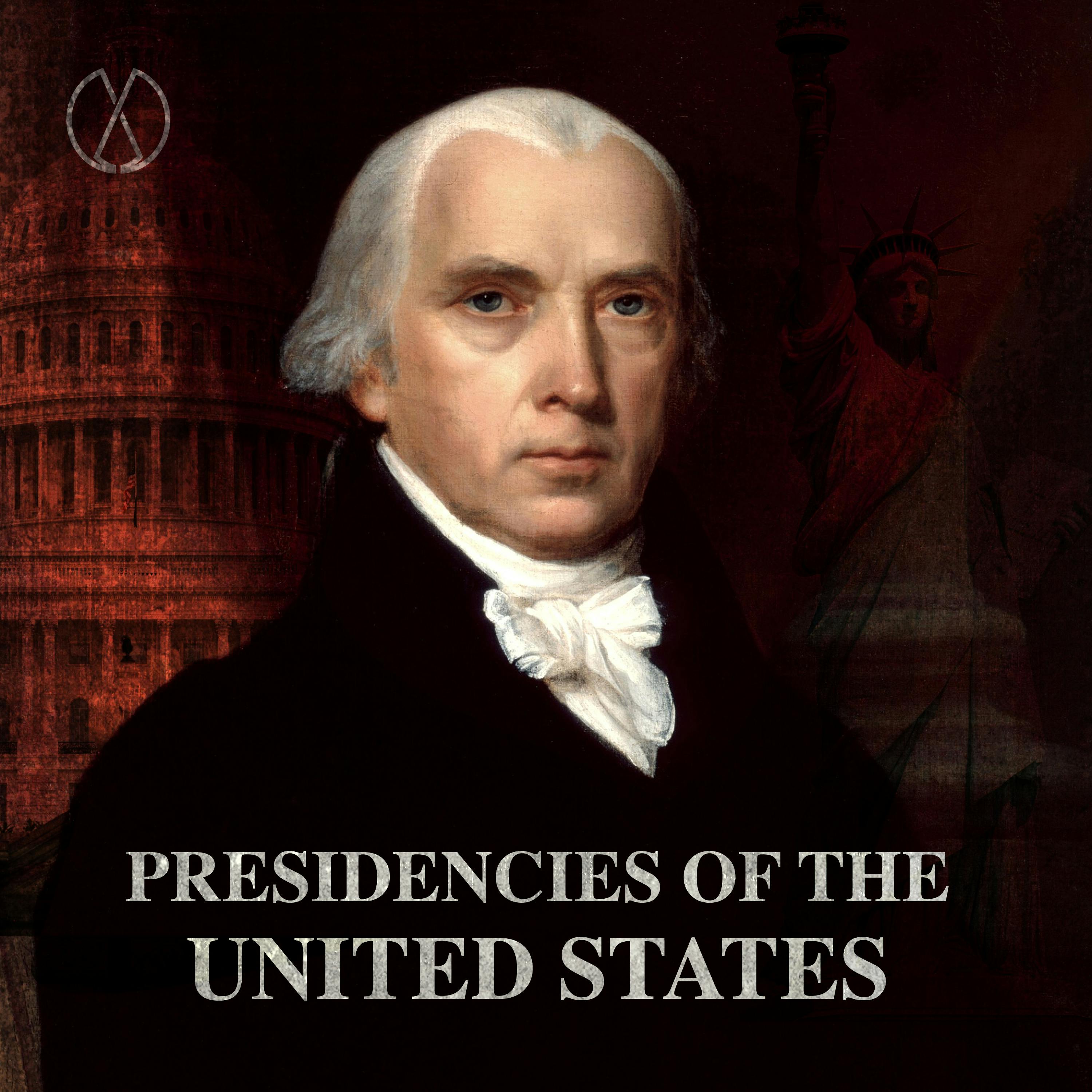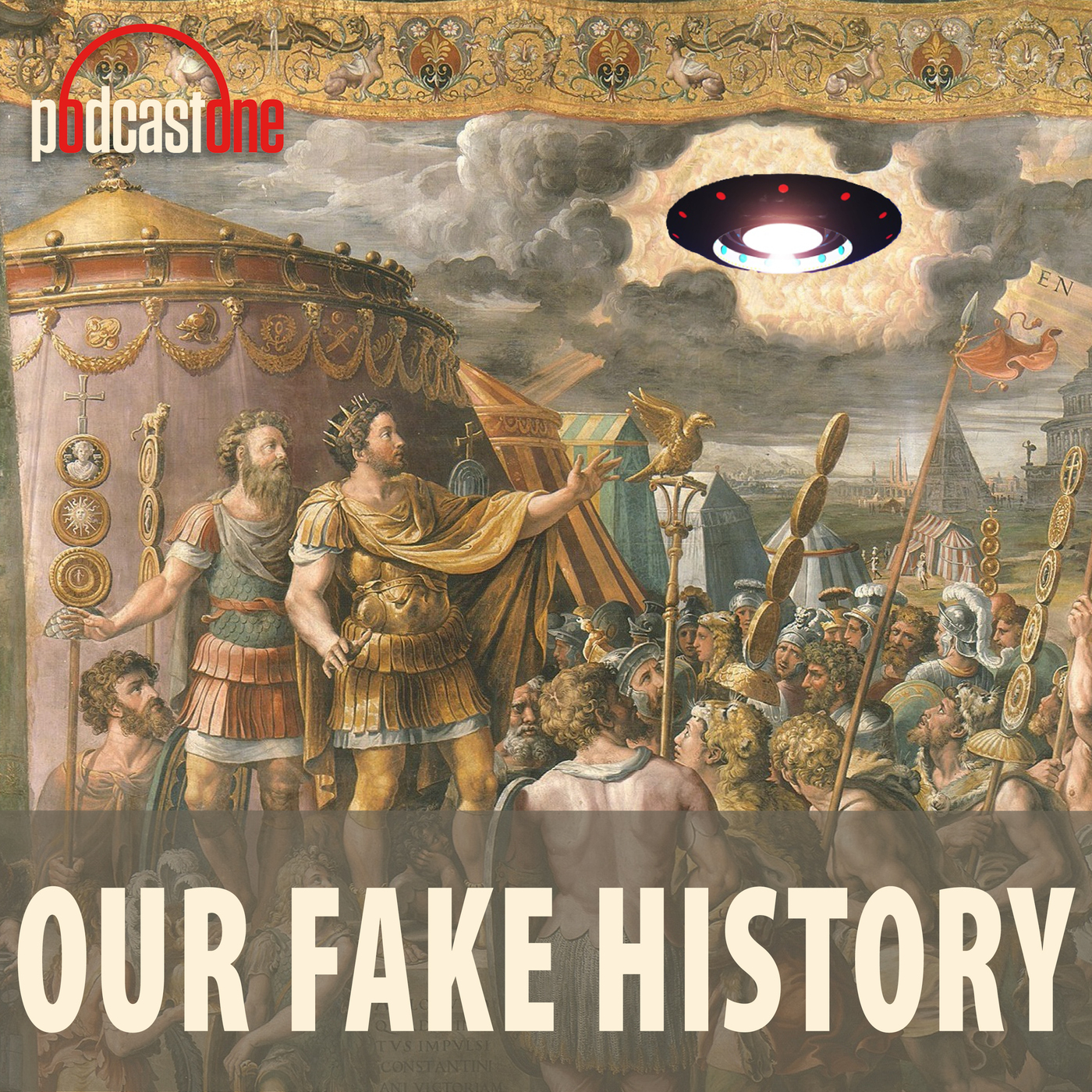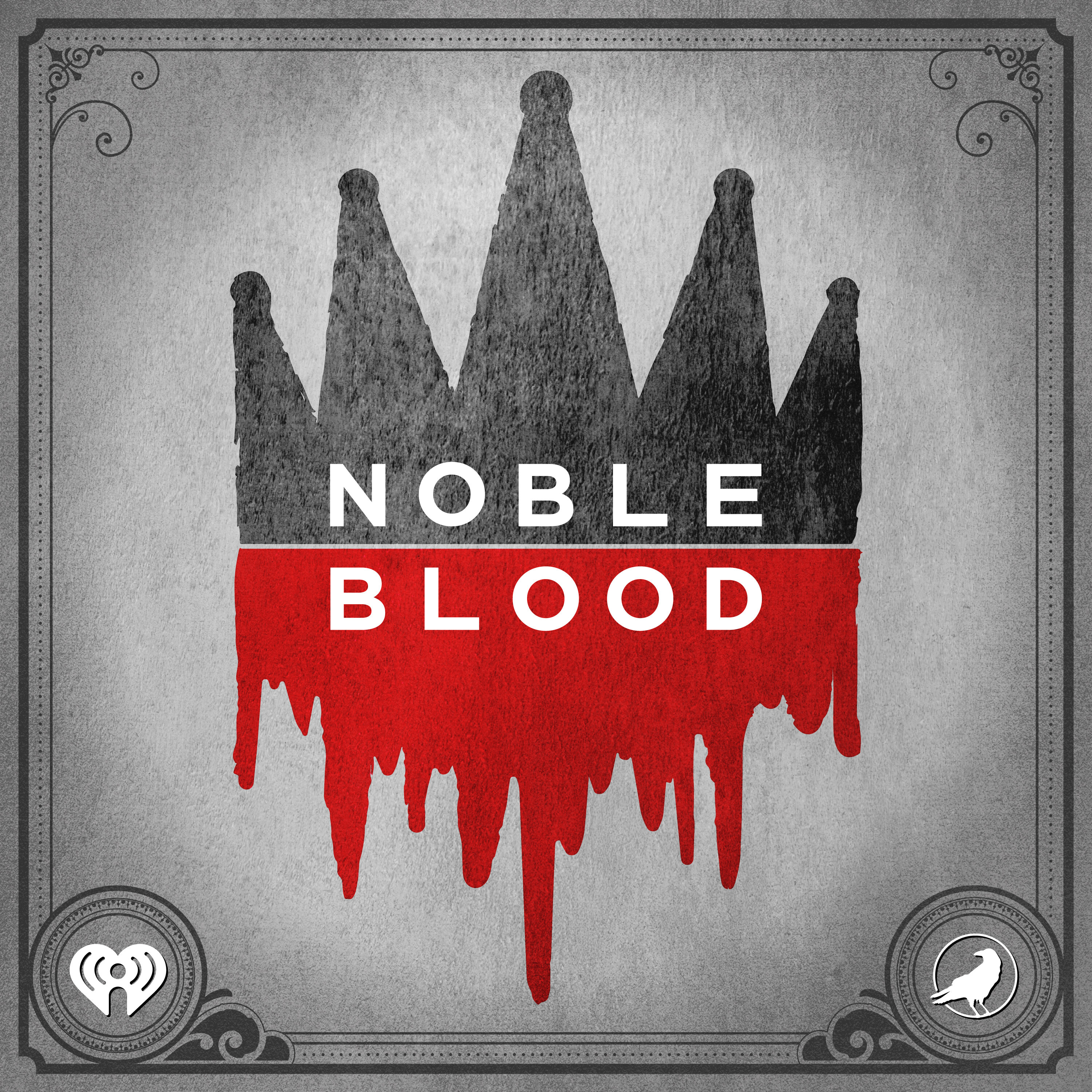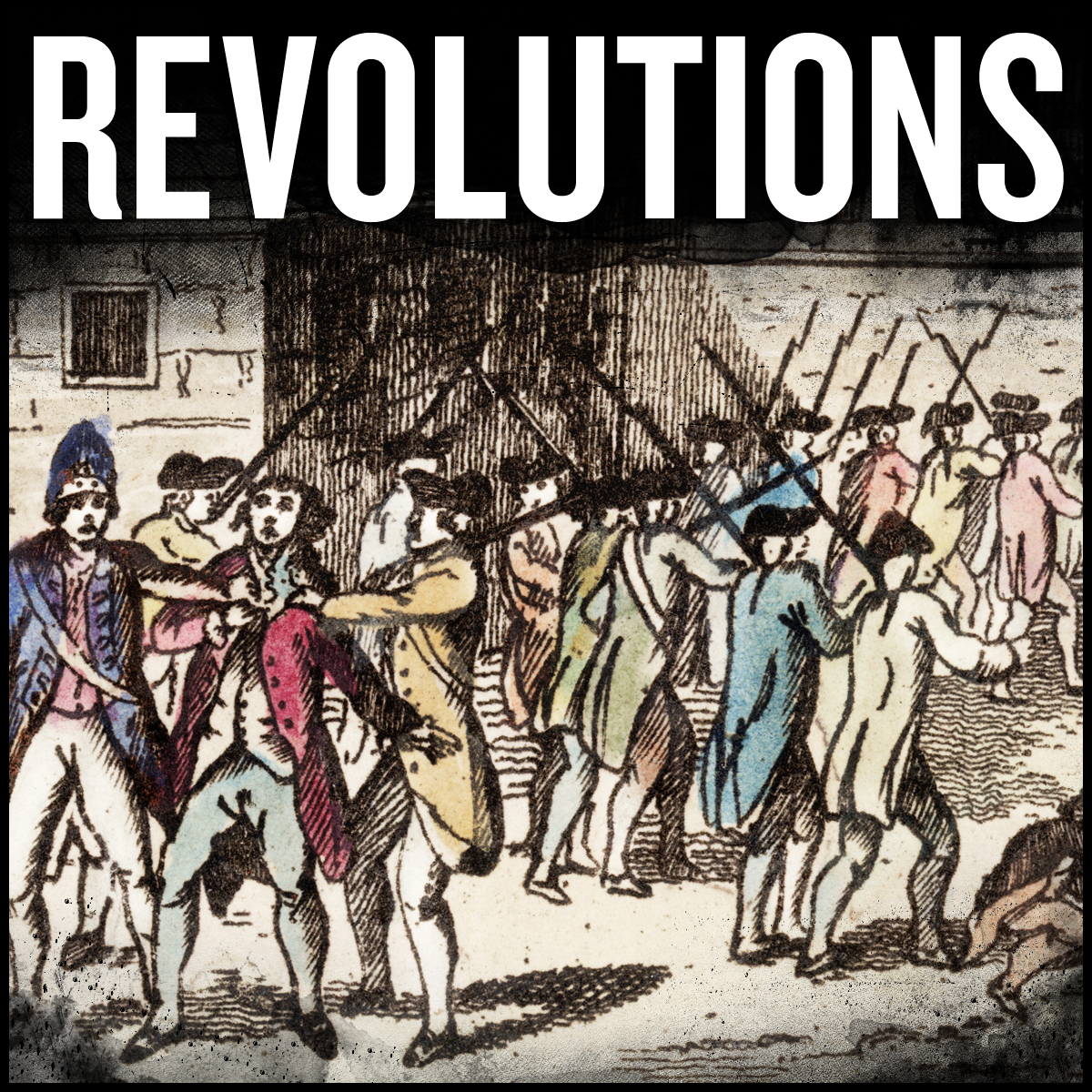
Door Key
I find myself drawn to the more social side of history than dates or battles. While I do think dates and battles are important, I find questions like ‘When did Catherine of Aragon realize she'd lost Henry VIII’s love to Anne Boleyn?’ or ‘Just what exactly was Aaron Burr's deal?’ to be what really fascinates me about history. This is the lens that I view history from on the Door Key Podcast (and the accompanying Substack newsletter) because I'm a dork with a deep love of history who wants to talk about it.
https://doorkey.substack.com/
Door Key
The Princes in the Tower
I would love to hear from you - click here to send Door Key a written message!
This episode discusses the Princes in the Tower mystery! After the death of King Edward IV, his sons princes Edward and Richard went into the Tower of London to await Edward’s coronation. Their uncle Richard, who was regent, seized the throne and was crowned King Richard III. The two princes were never seen again, and the mystery of what happened to them has fueled questions and theories for hundreds of years. This episode gets into the rapid sequence of events leading to the disappearance of the two princes, and various theories about who might have been responsible for it.
☕️ Production and Marketing assistance provided by Coffeelike Media
Subscribe to the Door Key Substack newsletter FREE and paid options:
https://doorkey.substack.com/
Follow Door Key on Social Media:
- Facebook: https://www.facebook.com/groups/1040108179952433
- Instagram: https://instagram.com/doorkeypod
- Threads: @doorkeypod
- LinkedIn: http://www.linkedin.com/in/doorkeypod
- Email: doorkeypod@gmail.com
Support Door Key:
- Become a paid subscriber on the Door Key Substack newsletter: https://doorkey.substack.com/
- Buy me a cup of coffee: https://www.buymeacoffee.com/doorkeypod
- Make a donation via PayPal: https://paypal.me/Doorkeypod?country.x=US&locale.x=en_US
- use our Buzzsprout affiliate link to host your podcast on this platform
The Princes in the Tower
Hello everyone! Before I start the episode, I wanted to mention that summer is coming to an end, which means that my favorite time of the year – Fall – is almost here! There are so many things I love about fall, but my favorite thing about it is Halloween! I love Halloween, and all things spooky, and so every October, I make sure every episode of Door Key has a spooky theme to the history! I call this the Spooktaculer, and I release a new episode every Thursday in October instead of the usual every other Thursday! There’s actually five Thursdays this October, so 2024’s Spooktaculer is going to be LIT, as the kids say. I have big plans, and I’m super excited for you all to see what I have in store! Muahaha … ok … now that I got that out of my system …. on to the episode!
I’m going to be talking about The Princes in the Tower today. A lot of you have probably heard of this before – this is the mystery of the fate of King Edward V of England and his younger brother Prince Richard. They were heirs to the throne of King Edward IV, who died in April of 1483. King Edward V, who I’m going to be calling Prince Edward from now on (just to keep things simple and to avoid confusion) was only 12 at the time, and Prince Richard was 9. Their uncle Richard, who was their dad’s brother, was named their regent. After Edward IV’s death, uncle Richard met up with Prince Edward and his entourage as they all made their way to London. The following morning, uncle Richard arrested Prince Edward’s entourage, including the boys' maternal uncle, Anthony Woodville, and their half-brother Sir Richard Grey. Uncle Richard then took Prince Edward himself. The mother of the two boys, Elizabeth Woodville, took her other son, Prince Richard and her daughters into sanctuary at Westminster Abbey. Prince Edward and uncle Richard arrived at London together. There were still plans for Prince Edward's coronation, which was supposed to happen on May 4, but it was postponed to June 25. On May 19, 1483, Prince Edward went to the Tower of London. This might sound strange to us in modern times, but The Tower was the typical place where a King or Queen would stay before their coronation until Charles II in the 1600s. On June 16, Prince Edward was joined in The Tower by his younger brother Prince Richard. At this point, the date of Prince Edward's coronation was indefinitely postponed by their uncle Richard. On Sunday June 22, a sermon was preached by the brother of the Lord Mayor of London claiming uncle Richard to be the only legitimate heir of the House of York. A few days after that, June 25 was a pivotal day in this story: the members of Prince Edward’s entourage that I mentioned earlier, Anthony Woodville and Sir Richard Grey were beheaded in Yorkshire. This was also the day that what was described as ‘a group of lords, knights and gentlemen’ petitioned uncle Richard to take the throne, and both Prince Edward and Prince Richard were declared illegitimate by Parliament. Then, on July 6, uncle Richard was crowned King Richard III.
I’m not really a ‘dates’ person, but I made sure to list the dates that all of this happened, because it all happened so quickly – in about 2 months!
So what happened to Prince Edward and Prince Richard after their uncle became King? Well, according to Dominic Mancini, an Italian friar who was in London in the spring and summer of 1483, after Richard III seized the throne, Prince Edward and Prince Richard were taken into the ‘inner apartments of the Tower’ and then were seen less and less, until they disappeared altogether. Mancini also says that during this period, Prince Edward was regularly visited by a doctor. There are also reports of the two princes being seen playing in the tower grounds shortly after Prince Richard joined Prince Edward, but there are no recorded sightings of either of them after the summer of 1483. There was an attempt to rescue them in late July, but that attempt failed. The fate of the two Princes remains a mystery. To quote Bunk from The Wire, ‘We got ourselves a stone-cold who-done-it’ here.
There were rumors about what happened of course. Most of these were rumors that the two Princes had been murdered, and these rumors made it all the way to France. An example of this are that in January of 1484, the Lord Chancellor of France urged the Estates General to quote ‘take warning’ from the fate of the princes, as their own king, Charles VIII, was only 13. These rumors didn’t just get to France though, they were all over Europe. There were contemporary reports from a German chronicler, and a recorder in Rotterdam which state that Richard III killed the princes before he seized the throne. While I don’t claim to know what happened, I personally give these reports some extra weight because they’re contemporary. I tend to give later accounts written after Henry Tudor became King less weight because they can be biased or influenced by Tudor propaganda.
So … what happened? While no one knows for sure, it’s generally assumed that the two princes were murdered. The most popular theory is that the princes were murdered, and that the murders were ordered by Richard III so that he could claim the throne. But it’s not even clear that the princes were killed. The only evidence that they even died is that people stopped seeing them. Because of this ambiguity, several other theories about what happened to the princes have been proposed, like that they were murdered by the Duke of Buckingham, or the future King Henry VII … it’s also been suggested that one or both princes may have escaped.
Then, in 1674, workmen at the Tower of London dug up a wooden box containing two small human skeletons under a staircase. The bones were found buried 10 feet (which is 3m) under the staircase leading to the chapel of the White Tower. It’s thought that these could be those of the princes. One anonymous report says that those bones were found with quote ‘pieces of rag and velvet about them’. The velvet is thought to indicate that the bodies were those of aristocrats. However, I feel like I need to tell you that the staircase which the bones were found underneath hadn’t been built yet at the time of Richard III. In any case, four years after the discovery of the bones, they were placed in an urn, and on the order of King Charles II interred in Westminster Abbey. A monument marks the resting place. The inscription, written in Latin, states "Here lie interred the remains of Edward V, King of England, and Richard, Duke of York, whose long desired and much sought after bones, after over a hundred and ninety years, were found interred deep beneath the rubble of the stairs that led up to the Chapel of the White Tower, on the 17 of July in the Year of Our Lord 1674."
These bones were removed and examined in 1933 by the archivist of Westminster Abbey, a leading anatomist, and the president of the Dental Association. By measuring certain bones and teeth, they concluded the bones belonged to two children around the correct ages for the princes. The bones were found to have been interred carelessly along with chicken and other animal bones. One skeleton was larger than the other, but many of the bones were missing, including part of the smaller jawbone and all of the teeth from the larger one. Many of the bones had been broken by the original workmen. This examination of the bones has been criticized, because it was conducted with the assumption that the bones were the princes, and focused only on whether the bones showed evidence of suffocation. No attempt was made to determine whether the bones were male or female. My main critique of this examination is that it was 1933, and they didn’t really have forensics then.
No further scientific examination has since been conducted on the bones, which remain in Westminster Abbey, and DNA analysis has not been attempted. It’s not even known if DNA could even be gotten from these bones. A petition was started on a British government's ‘e-petition’ website asking that the bones be DNA tested, but it was closed months before its expected close date. It’s been pointed out that even if modern DNA and carbon dating proved that the bones belonged to the princes, it would not prove who or what killed them … which, fair.
Then, in 1789, workmen carrying out repairs in St. George's Chapel in Windsor, rediscovered and accidentally broke into the vault of Edward IV and Queen Elizabeth Woodville. They discovered what appeared to be a small adjoining vault, which held the coffins of two unidentified children. No inspection or examination was carried out, and the tomb was resealed. The tomb was inscribed with the names of two of Edward IV's children: George, who died at the age of 2, and Mary of York who had died at the age of 14, both had died before the king. This all seems straightforward enough, right? But two lead coffins clearly labelled as George Plantagenet and Mary Plantagenet were later discovered in another area in the chapel, and were moved into the adjoining vault of Edward IV. No effort was made to identify the two lead coffins already in Edward IV's vault. So we have another mystery here: there are two coffins labeled as George, and two labeled as Mary, we don’t know which is correctly labeled, or if any of them are correct.
In the late 1990s, work was being carried out near and around Edward IV's tomb in St George's Chapel. A request was made to consider a possible examination of the two vaults either by fibre-optic camera or, if possible, a reexamination of the two unidentified lead coffins in the tomb that were discovered and placed in the adjoining vault. Royal consent would be necessary to open any royal tomb. Queen Elizabeth II did not give consent.
Then the remains of Richard III were discovered in 2012, which I don’t know if you remember that, but oh my gosh, I sure do! His remains were found under what had become a parking lot – it was wild! The discovery of Richard III’s remains brought renewed interest in re-excavating the skeletons, but Queen Elizabeth II still didn’t grant approval for any testing. In 2022, Tracy Borman, joint chief curator of Historic Royal Palaces stated that King Charles III held quote ‘a very different view’ unquote on the subject, and could potentially support an investigation. King Charles, I know you listen to this pod … get on approving that testing please and thank you!
Until we do hear back from King Charles, we’re left to theorize. Here are some of the most popular theories:
By far, the most popular suspect is Richard III (surprise!). Many historians have come to the conclusion that’s he’s the prime suspect for several reasons. One reason being that Richard’s reign was shaky due to the way he had gotten the crown, and there was backlash to it. An attempt had already been made to restore prince Edward to the throne. It’s clear that the princes would remain a threat to Richard III as figureheads for rebellion as long as they were alive. Rumors of his nephews’ death started by late 1483, but Richard III never attempted to prove that his nephews were alive by having them seen in public. This strongly suggests that they were dead by then. It doesn’t help Richard III’s case that he didn’t open any investigation into this matter. However, Richard III is said to have claimed his innocence in this matter. Richard was away from court at the time the princes disappeared, so if they did die at this time, it wouldn’t have been possible for him to have been the murderer. The princes were under guard in the Tower of London, which was controlled by Richard III’s men, and access to the princes was strictly limited by his instructions. Richard III could have had someone murder the princes for him, but it’s unlikely the princes could have been murdered without Richard III’s knowledge. There was a man named Sir James Tyrrell who was an English knight. He was arrested by Henry VII’s forces. Shortly before his execution, Tyrrell is said to have admitted under torture to having killed the princes at Richard III’s request. I personally find this confession suspicious though. If this confession really happened, it was under torture. Also, there’s only one source for this confession, and the source is a Tudor insider. Of course there’s also a theory that Tyrrell did it, but on Henry VII’s request instead of Richard’s, so ...
Richard III's guilt was widely accepted by contemporaries, which I admit that I personally find is the most damning evidence against him. However, history is said to be written by the victors, and after defeating Richard III at the Battle of Bosworth, the Tudors had generations to vilify Richard III and form the narrative that Richard would either kill his nephews or have them killed. Just ask Shakespear. So while yes, I think it makes sense for Richard III to be the culprit, I’m not ready to go on record saying he did it.
Another suspect is Henry Stafford, 2nd Duke of Buckingham. He was Richard III's right-hand man. Stafford was executed in November 1483, so him being the culprit depends on the princes having already been dead by that time. There are several motives that could point to Stafford’s guilt: He was a descendant of Edward III on his father’s side, and John of Gaunt on his mother’s side, so he had a pretty good claim to the throne himself, and might have hoped to get there one day. There’s also the possibility that if Stafford did it, he was acting on behalf of someone else. What I find most damning to Stafford is that he’s the only person named as responsible in a contemporary source other than Richard III himself.
Another popular suspect is Henry Tudor, who would later become Henry VII. After seizing the crown after winning the Battle of Bozworth, Henry did execute some rival claimants to the throne, so it’s not like Henry was above that. I mean, one of the people Henry is said to have had executed is Richard III’s son. Henry was out of the country when the princes disappeared though. Some historians believe that Henry, or someone acting on Henry’s orders, is quote ‘the only plausible alternative to Richard III.’
The year after becoming king, Henry VII married the princes' sister, Elizabeth of York. This marriage not only reinforced Henry’s claim to the throne, but it ended the civil war that’s known as The War of the Roses, and started the Tudor dynasty.
Henry VII never really said anything about the death of the princes, although his silence is mostly interpreted as quote ‘more political calculation than personal guilt’. The fact that I find most clearing of Henry is that he was never accused of murdering the princes by any contemporary, not even by his enemies. I think people would have spoken up if they thought there was any possibility of his guilt. Although, keep in mind that Henry VII is a Tudor, so benefits from decades of Tudor propaganda. I going to repeat myself: history is written by the victors.
There are other suspects. Some scholars have accused John Howard, 1st Duke of Norfolk, others think it was Henry VII’s mother Margaret Beaufort. However, there’s only speculation about a possible motive on these, not evidence. Historian Albert Pollard has commented regarding theories like this: ‘None deserve serious consideration. The problem with all these accusations is that they beg the question of access to the Tower without Richard's knowledge and overlook the fact that Richard was responsible for the safekeeping of his nephews’. I think this is actually a really good point!
Then we come to the final theory, which is my personal favorite: the theory that the princes survived. Historian David Baldwin suggests that the reason Henry VII didn’t want to talk about the princes may have been because at least one of the princes was still alive. Baldwin doesn’t think it makes sense that nobody knew what happened to the princes after they went into the Tower. He thinks that Richard III, Henry VII, and their mother would all have known what happened to them.
During the reign of Henry VII, two different people claimed to be one of the princes who had escaped death. One man was Lambert Simnel, who looked like Prince Richard. He would later be crowned as ‘King Edward’ in Dublin, after his supporters named him as Edward Plantagenet, 17th Earl of Warwick. The second man was named Perkin Warbeck. He also claimed to be Richard, appearing in Ireland and calling himself king Richard IV. Margaret of York, Duchess of Burgundy, formally recognized Warbeck as Richard. Although to be fair, Margaret was Richard III's sister, and an enemy of Henry VII, and had previously recognized Simnel as Richard, so ... I’m going to give Margaret a bit of side-eye here on this issue. James IV of Scotland also accepted Warbeck as Richard. After a failed attempt to invade England Warbeck was captured. Warbeck retracted his claims, was imprisoned, and then executed. Many modern historians believe he was an imposter, and that his supporters accepted his claim for political reasons.
However, the fact that two different people claimed to be Richard led some historians to theorize that Prince Richard had in fact escaped death, and that Warbeck was Prince Richard. In more recent times, the theory that Warbeck was Richard got an added detail that the princes were smuggled abroad to the custody of their aunt, the Duchess of Burgundy, where they were raised there under false identities.
In 2021, researchers from the "Missing Princes Project" claimed to have found evidence that Prince Edward had lived out his days in the rural Devon village of Coldridge. They’ve linked the 13-year-old prince with a man named John Evans, who arrived in the village around 1484, and was immediately given an official position and the title of Lord of the Manor. Researcher John Dike noted Yorkist symbols and stained glass windows depicting Edward V in a Coldridge chapel commissioned by Evans and built around 1511, which was unusual for the location.
I’m going to stop right here. I can see why people would want to believe that one or both of the princes survived. And when you add in a possible secret identity, and coded stained glass windows, the story gets even better. It would be dishonest of me not to say how much I would love for some version of that to be what happened to the Princes in the Tower.
There’s a term called Occam’s Razor, which I’m going to read the definition of: Occam's razor is a principle of theory construction or evaluation according to which, other things equal, explanations that posit fewer entities, or fewer kinds of entities, are to be preferred to explanations that posit more. Thanks Google!
So to put it very simply, the principle of Occam’s Razor is that the simplest explanation is usually the answer. I’ve found that this principle applies very often in life. And while I don’t like this one bit, if Occam’s Razor is applied to the mystery of what happened to the Princes in the Tower, I think the simplest explanation is that the princes died while they were in the Tower. They could have caught some illness in the Tower that they died from, or they could have died on the orders of their uncle Richard, or Henry VII. I don’t know, but I think that the princes didn’t survive is the simplest explanation, and so that’s what I think happened.
I’m sorry there’s not a definitive answer to what happened to the princes in the Tower. Unfortunately, I don’t think we’ll ever get an answer, which I know isn’t very satisfying. If a time machine is ever invented, I promise that one of the things I would do is go back to this point in history and see what really happened. I hope I’m wrong, and that the princes did somehow survive. If so, I promise that there would be an emergency episode of Door Key where I would clear everything up and tell you all what really happened. Until then though, I hope that King Charles will agree to approve the DNA testing of the bones in Westminster Abbey. Again, this testing would only tell us if these are even the remains of the princes, not how they died. But that would at least be a step in the right direction of solving this mystery, so I’m all for it. The next thing on the list of things we need to solve this is a time machine, so we’ll have to get to work on that too. I’ll leave that one up to people much more intelligent and capable than I am … in the meantime I’ll be keeping an eye on this story, and will be sure to update you all with any new information that comes out!
HRP.org.uk / pbs.org / bbc.co.uk / Wikipedia
Podcasts we love
Check out these other fine podcasts recommended by us, not an algorithm.

Vulgar History: Regency Era
Vulgar History | Realm
Presidencies of the United States
Evergreen Podcasts
World Herstory
Tabitha Bear
History with Jackson
History with Jackson
Civics & Coffee: A History Podcast
Alycia Asai
Deep into History
Deep into History
Plodding Through The Presidents
Howard & Jessica Dorre
You're Wrong About
Sarah Marshall
Our Fake History
PodcastOne
Noble Blood
iHeartPodcasts and Grim & Mild